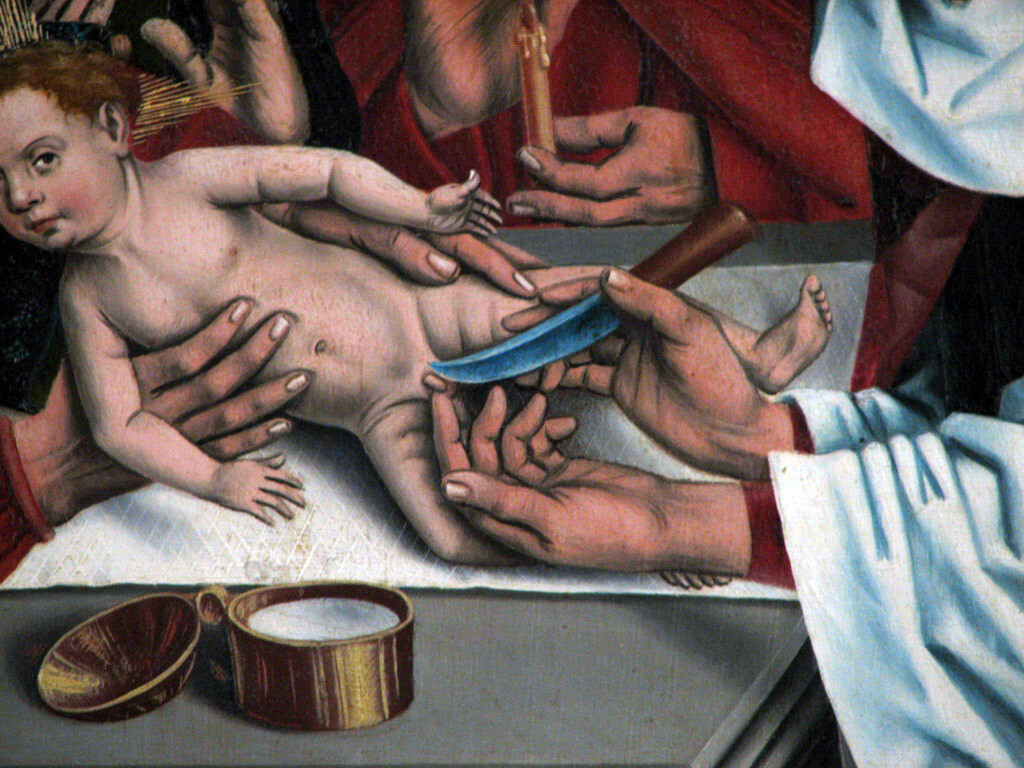5 Disgusting Relics the Catholic Church Could Probably Chill Out With

If we’re rating or comparing the general chillness of different religions, Catholicism would rate pretty heavily on the “whoa buddy” side of the scale. Along with the great gift of guilt that seems to be bestowed on most current and past practitioners I know, there’s also an incredible amount of pomp and circumstance involved. Lots of robes, accessories and holding things up dramatically in the air. I mean, even with the absolute chillest of popes, there is still some dramatic energy stored in a hat like that.
Another thing the Catholic Church has a particular love for is religious props, or what they would refer to as “relics.” I’m not sure how seriously I can refer to them with such reverence when some of them have just turned out to be goat bones (and not even a particularly saintly goat). I’m not the first one to question the amount of time and energy put toward various desiccated limbs by Catholicism either, considering it’s part of why Protestants exist altogether. Even if you’re on the relic train, though, there’s still a whole bunch that are a little much. Look, if you want to say something’s the Shroud of Turin, or the spear that pierced Christ’s side, go ahead. Just don’t ask me to prostrate myself in front of St. Somebody’s sun-dried appendix.
Don't Miss
Here are five Catholic relics that feel a little more Necronomicon than biblical.
St. Catherine’s Head

Look, I get that saints, by definition, are a reminder to the sort of devoted life the best among us can live. More power to them, like St. Catherine of Siena, famous for treating the sick and encouraging peace within Italy. She also suggested a Crusade against Muslims, which seems a lot less peaceful, but she is now the patron saint of, among other things, preventing illness, so who am I to deny a sick person someone to pray to?
I do think, though, that praying for nana to recover from her slip and fall might be done just as well without staring into the half-open mouth of St. Catherine’s decapitated head. Should you believe that the only way to restore your humours to the correct balance is through the benevolence of a dried out corpse-top that’s not looking too healthy itself, you can see it at the Basilica San Domenico in Siena, Italy.
Doubting Thomas’ Finger

As much as it might seem like an old-timey insult pulled from the pages of a Twain book, Doubting Thomas refers to one of the 12 apostles of Jesus. The doubting part comes from his very reasonable belief that once somebody was dead, they stayed dead. So when he got the news that Jesus was back, he, well, doubted it. A little weirder was his criteria for confirming it was Jesus, which included sticking his nasty 0 A.D. fingers into Jesus’ spear wound. As he said in John 20:25, “Unless I see the nail marks in His hands, and put my finger where the nails have been, and put my hand into His side, I will never believe.”
Of course, Jesus, in his great magnanimity, did not say to Thomas, “Hey man, maybe the first two things are enough?” He instead replied, in his great wisdom, “Uh, okay, man, dig around in there if it’ll butter your bagel” (paraphrased). Fishhooking J.C.’s side, of course, made Thomas’ finger holy as shit, and as such, it’s an object of great value. Should you want to check out the bones of the finger that dug around inside Jesus, they’re located at the Basilica Santa Croce in Rome.
Remains of St. Hyacinth

In case a single finger or head is not enough to instill in you sufficient holy spirit, may I recommend a visit to Furstenfeld Abbey near Munich in Germany? There, you’ll be able to view what remains of Saint Hyacinth, who was martyred for his Christian beliefs by the Romans. Well, a heavily decorated version of his remains, namely his entire skeleton, absolutely covered in precious metals and jewels and looking much more like something Hellboy should fight than a simple pious Christian man.
All I’m saying is, if you walked into a room and saw a whole bunch of robed figures kneeling in front of this bedazzled skeleton, your first instinct wouldn’t be, “Oh, are you guys Catholic?” You’d instead be preparing for some sort of portal to open. And by the way, just in case a gold-covered skeleton lying in repose isn’t creepy enough for you, St. Hyacinth was 12 when he died. Nothing makes me not question God like a child’s skeleton!
The Holy Prepuce

Jesus, it’s pretty commonly accepted, was Jewish. Now the details and specifics beyond that, namely his Messiah-hood, are not something I’m going to get into because I don’t have a couple thousand years free to engage in war about it. Some people said he was the Messiah, some people said, “We don’t think so,” and centuries later Edward Norton is now curb-stomping a guy in a movie. Religion: It’s cool!
One additional, literally tiny detail that comes with Jesus being Jewish — his severed foreskin. It might not be the premier bit of the holy body you might want, but we’re still talking about a little bit of Jesus here, so the remains from making his hoodie a crewneck are still incredibly holy. Because of that, it became very popular to claim ownership of what’s known as the “Holy Prepuce” in the Middle Ages. So much so, that over a dozen places around Europe claimed to be in possession of the sheared end of his shvantz.
The Blood of St. Januarius

St. Januarius, the Bishop of Benevento, was another saint who was martyred for his Christian faith by the Emperor Diocletian — by a classic beheading no less. Luckily (?) for future generations, the tale goes that as his neck spurted out his saintly blood and plasma, it was caught and collected, much like a vampire filling a Nalgene for later, by a woman named Eusebia.
These vials of blood are now held in a reliquary, which is a word meaning “thing containing something very gross and holy,” but this one is a little more tightly guarded, partly because his blood is still part of an ongoing miracle. At least, according to the Catholic Church, who have no reason to lie about anything, especially this. Three times a year the blood is brought out and miraculously turns from crimson dust into the hot wet red you’d expect to see leaking out of a much more recently killed man. It’s a very holy moment, by all indication, but it’s also got serious Blade 2 blood rave vibes.